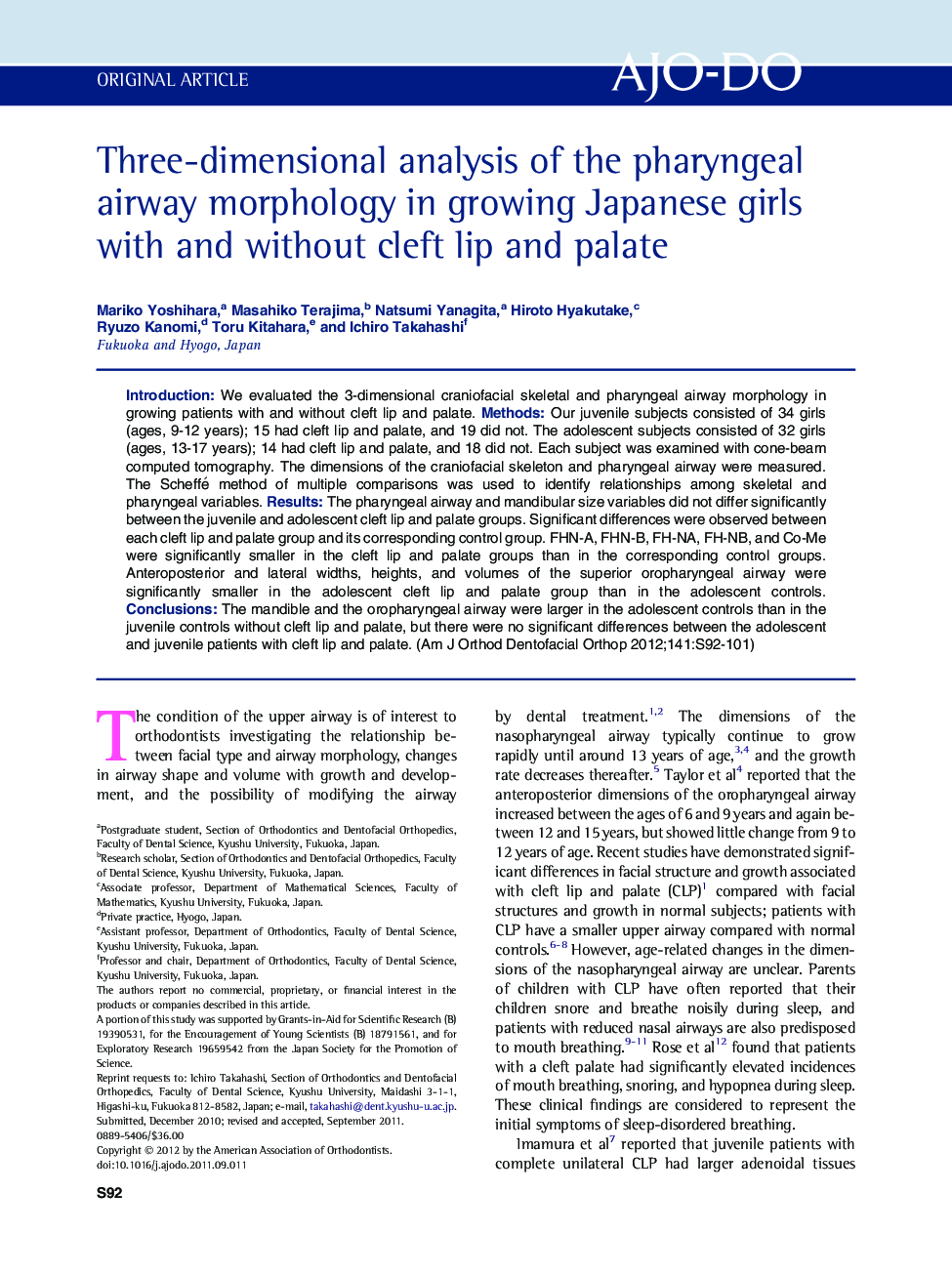| Article ID | Journal | Published Year | Pages | File Type |
|---|---|---|---|---|
| 3117534 | American Journal of Orthodontics and Dentofacial Orthopedics | 2012 | 10 Pages |
IntroductionWe evaluated the 3-dimensional craniofacial skeletal and pharyngeal airway morphology in growing patients with and without cleft lip and palate.MethodsOur juvenile subjects consisted of 34 girls (ages, 9-12 years); 15 had cleft lip and palate, and 19 did not. The adolescent subjects consisted of 32 girls (ages, 13-17 years); 14 had cleft lip and palate, and 18 did not. Each subject was examined with cone-beam computed tomography. The dimensions of the craniofacial skeleton and pharyngeal airway were measured. The Scheffé method of multiple comparisons was used to identify relationships among skeletal and pharyngeal variables.ResultsThe pharyngeal airway and mandibular size variables did not differ significantly between the juvenile and adolescent cleft lip and palate groups. Significant differences were observed between each cleft lip and palate group and its corresponding control group. FHN-A, FHN-B, FH-NA, FH-NB, and Co-Me were significantly smaller in the cleft lip and palate groups than in the corresponding control groups. Anteroposterior and lateral widths, heights, and volumes of the superior oropharyngeal airway were significantly smaller in the adolescent cleft lip and palate group than in the adolescent controls.ConclusionsThe mandible and the oropharyngeal airway were larger in the adolescent controls than in the juvenile controls without cleft lip and palate, but there were no significant differences between the adolescent and juvenile patients with cleft lip and palate.
